Related Research Articles

Ignaz Philipp Semmelweis was a Hungarian physician and scientist of German descent, who was an early pioneer of antiseptic procedures, and was described as the "saviour of mothers". Postpartum infection, also known as puerperal fever or childbed fever, consists of any bacterial infection of the reproductive tract following birth, and in the 19th century was common and often fatal. Semmelweis discovered that the incidence of infection could be drastically reduced by requiring healthcare workers in obstetrical clinics to disinfect their hands. In 1847, he proposed hand washing with chlorinated lime solutions at Vienna General Hospital's First Obstetrical Clinic, where doctors' wards had three times the mortality of midwives' wards. The maternal mortality rate dropped from 18% to less than 2%, and he published a book of his findings, Etiology, Concept and Prophylaxis of Childbed Fever, in 1861.
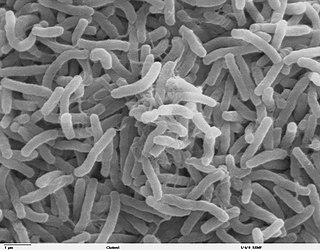
The germ theory of disease is the currently accepted scientific theory for many diseases. It states that microorganisms known as pathogens or "germs" can cause disease. These small organisms, too small to be seen without magnification, invade humans, other animals, and other living hosts. Their growth and reproduction within their hosts can cause disease. "Germ" refers to not just a bacterium but to any type of microorganism, such as protists or fungi, or other pathogens that can cause disease, such as viruses, prions, or viroids. Diseases caused by pathogens are called infectious diseases. Even when a pathogen is the principal cause of a disease, environmental and hereditary factors often influence the severity of the disease, and whether a potential host individual becomes infected when exposed to the pathogen. Pathogens are disease-carrying agents that can pass from one individual to another, both in humans and animals. Infectious diseases are caused by biological agents such as pathogenic microorganisms as well as parasites.

The year 1843 in science and technology involved some significant events, listed below.

Oliver Wendell Holmes Sr. was an American physician, poet, and polymath based in Boston. Grouped among the fireside poets, he was acclaimed by his peers as one of the best writers of the day. His most famous prose works are the "Breakfast-Table" series, which began with The Autocrat of the Breakfast-Table (1858). He was also an important medical reformer. In addition to his work as an author and poet, Holmes also served as a physician, professor, lecturer, inventor, and, although he never practiced it, he received formal training in law.

Postpartum infections, also known as childbed fever and puerperal fever, are any bacterial infections of the female reproductive tract following childbirth or miscarriage. Signs and symptoms usually include a fever greater than 38.0 °C (100.4 °F), chills, lower abdominal pain, and possibly bad-smelling vaginal discharge. It usually occurs after the first 24 hours and within the first ten days following delivery.
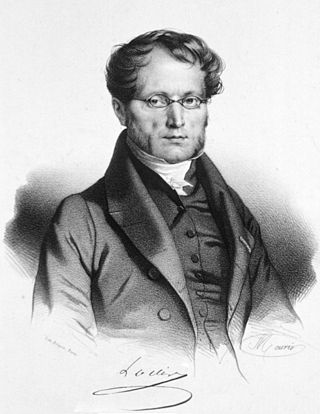
Pierre-Charles-Alexandre Louis was a French physician, clinician and pathologist known for his studies on tuberculosis, typhoid fever, and pneumonia, but Louis's greatest contribution to medicine was the development of the "numerical method", forerunner to epidemiology and the modern clinical trial, paving the path for evidence-based medicine.

The Rotunda Hospital is a maternity hospital on Parnell Street in Dublin, Ireland, now managed by RCSI Hospitals. The Rotunda entertainment buildings in Parnell Square are no longer part of the hospital complex.

Robert Liston was a British surgeon. Liston was noted for his speed and skill in an era prior to anaesthetics, when speed made a difference in terms of pain and survival. He was the first Professor of Clinical Surgery at University College Hospital in London and performed the first public operation utilizing modern anaesthesia in Europe.

The Autocrat of the Breakfast-Table (1858) is a collection of essays written by Oliver Wendell Holmes Sr. The essays were originally published in The Atlantic Monthly in 1857 and 1858 before being collected in book form. The author had written two essays with the same name which were published in the earlier The New-England Magazine in November 1831 and February 1832, which are alluded to in a mention of an "interruption" at the start of the first essay.

Harriot Kezia Hunt was an American physician and women's rights activist. She spoke at the first National Women's Rights Conventions, held in 1850 in Worcester, Massachusetts.

George Parkman, a Boston Brahmin and a member of one of Boston's richest families, was a prominent physician, businessman, and philanthropist, as well the victim in the sensationally gruesome Parkman–Webster murder case, which shook Boston in 1849–1850.
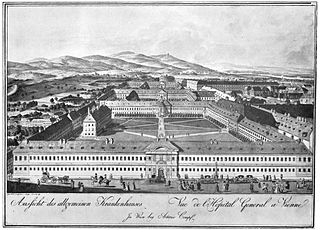
Historically, puerperal fever was a devastating disease. It affected women within the first three days after childbirth and progressed rapidly, causing acute symptoms of severe abdominal pain, fever and debility.
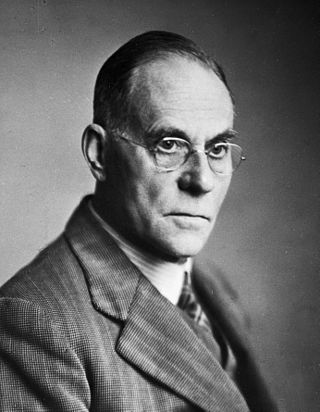
Leonard Colebrook FRS was an English physician and bacteriologist.

Charles Delucena Meigs was an American obstetrician who worked as chair of obstetrics and diseases of women at Jefferson Medical College from 1841 to 1861. He worked as editor of The North American Medical and Surgical Journal and published multiple papers and books on various topics in obstetrics including thrombosis as a cause of sudden death in women during childbirth, diseases of the cervix and postpartum infections. He was a fellow of the College of Physicians of Philadelphia and served as president from 1845 to 1855.
Disease in colonial America that afflicted the early immigrant settlers was a dangerous threat to life. Some of the diseases were new and treatments were ineffective. Malaria was deadly to many new arrivals, especially in the Southern colonies. Of newly arrived able-bodied young men, over one-fourth of the Anglican missionaries died within five years of their arrival in the Carolinas. Mortality was high for infants and small children, especially for diphtheria, smallpox, yellow fever, and malaria. Most sick people turned to local healers, and used folk remedies. Others relied upon the minister-physicians, barber-surgeons, apothecaries, midwives, and ministers; a few used colonial physicians trained either in Britain, or an apprenticeship in the colonies. One common treatment was blood letting. The method was crude due to a lack of knowledge about infection and disease among medical practitioners. There was little government control, regulation of medical care, or attention to public health. By the 18th century, Colonial physicians, following the models in England and Scotland, introduced modern medicine to the cities in the 18th century, and made some advances in vaccination, pathology, anatomy and pharmacology.
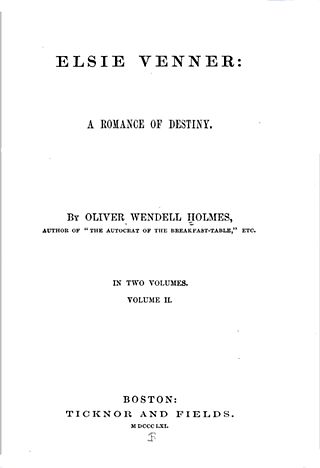
Elsie Venner: A Romance of Destiny is an 1861 novel by American author and physician Oliver Wendell Holmes Sr. Later dubbed the first of his "medicated novels", it tells the story of a young woman whose mother was bitten by a rattlesnake while pregnant, which imbued the child with some characteristics of the reptile. Bernard Langdon, who takes a teaching job at Elsie's school, becomes curious about her, even as he slightly fears her.

The Boston Medical Library of Boston, Massachusetts, was originally organized to alleviate the problem that had emerged due to the scattered distribution of medical texts throughout the city. It has evolved into the "largest academic medical library in the world".

James Jackson was an American physician. He was a proponent of Massachusetts General Hospital and became its first physician.

The Boston Society for Medical Improvement was an elite society of Boston physicians, established in 1828 for "the cultivation of confidence and good feeling between members of the profession; the eliciting and imparting of information upon the different branches of medical science; and the establishment of a Museum and Library of Pathological Anatomy". It held regular meetings until at least 1917.

Alexander Gordon MA, MD was a Scottish obstetrician best known for clearly demonstrating the contagious nature of puerperal sepsis. By systematically recording details of all visits to women with the condition, he concluded that it was spread from patient to patient by the attending midwife or doctor, and he published these findings in his 1795 paper "Treatise on the Epidemic Puerperal Fever of Aberdeen". On the basis of these conclusions, he advised that the spread could be limited by fumigation of the clothing and burning of the bed linen used by women with the condition and by cleanliness of her medical and midwife attendants. He also recognised a connection between puerperal fever and erysipelas, a skin infection later shown to be caused by the bacterium Streptococcus pyogenes, the same organism that causes puerperal fever. His paper gave insights into the contagious nature of puerperal sepsis around half a century before the better-known publications of Ignaz Semmelweis and Oliver Wendell Holmes and some eighty years before the role of bacteria as infecting agents was clearly understood. Gordon's textbook The Practice of Physik gives valuable insights into medical practice in the later years of the Enlightenment. He advised that clinical decisions be based on personal observations and experience rather than ancient aphorisms.
References
- ↑ "The Contagiousness of Puerperal Fever". Bartleby.com. Retrieved 23 June 2014.
- ↑ "Harvard Classics, Vol. 38, Part 5 The Contagiousness of Puerperal Fever". Bartleby.com. Retrieved 23 June 2014.
- 1 2 3 4 "Oliver Wendell Holmes". Lane Library. Archived from the original on 17 October 2014. Retrieved 23 June 2014.
- ↑ Holmes, Oliver Wendell (1843). The Contagiousness of Puerperal Fever. New England Quarterly Journal of Medicine and Surgery 1. p. 213.
- ↑ Copeland, James (1852). A Dictionary of Practical Medicine. Vol. 7. New York: Harper and Brothers. p. 559.
- ↑ "Oliver Wendell Holmes". Lane Library. Archived from the original on 17 October 2014. Retrieved 23 June 2014.
- ↑ Holmes, Oliver Wendell (1855). Puerperal Fever as a Private Pestilence. Boston: Ticknor and Fields.